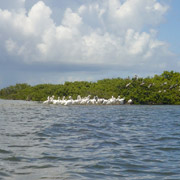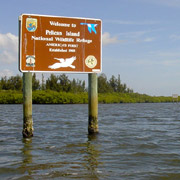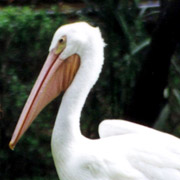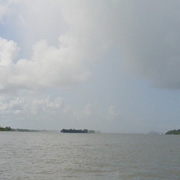
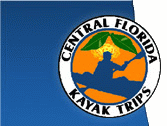
|
|
|

Description Pelican Island National Wildlife Refuge (NWR) holds a unique place in American history. On March 14, 1903 by Executive Order and a stroke of President Theodore Roosevelt's pen, the tiny 5.5 acre island (now much smaller) became America's first national wildlife refuge. From its humble beginning, the Refuge now exceeds 5,300 acres with 4,760 acres of submerged bottom lands and mangrove islands. The Refuge is home to more than 90 species of birds including brown and white pelicans, several types of egrets, heron, wood storks, white ibis, cormorants and many others. While you'll get a good opportunity to bird watch, getting a glimpse of the endangered West Indian manatee, green sea turtle or loggerhead sea turtle that also share the Refuge may prove to be a bit trickier. The trip from the put-in at Wabasso Island Causeway Park to Pelican Island and back is 7 miles in length. To begin, paddle under the causeway bridge and go to the north end of Wabasso Island. Turn east until you reach the East Channel at the high Wabasso Bridge (the Intercoastal follows the west channel). Go north along the mangrove-lined East Channel and Spratt Creek for four miles. Pelican Island is 1/4 mile west of the brown observation tower. You will easily spot the small island with its many resident pelicans. To return along the Intercoastal, paddle west to Pauls Island and turn south. Once past the mangroves of Pauls Island, you should be able to see the Wabasso Island causeway bridge at 2.5 miles distant. Access From the intersection of SR 60 and I-95 in Vero Beach, go east on SR 60 to US 1. Turn north (left) on US 1 and go approximately 10 miles to the small town of Wabasso. Turn east (right) on County Road 510. Cross over the flat causeway bridge. At the east end of the bridge is Wabasso Causeway Park and boat ramp. Put-in at the boat ramp or anywhere along the south side of the park. You can also access Wabasso and Pine Islands from this put-in. Pelican Island National Wildlife Refuge Photographs
References Alden, P., Cech, R., Nelson, G. (1998) National Audubon Society
Field Guide to Florida, Chanticleer Press, Inc., New York, NY |
|||||||||||||||||||||




